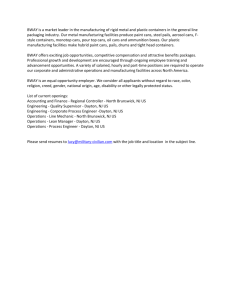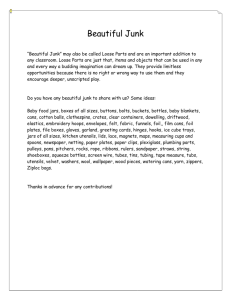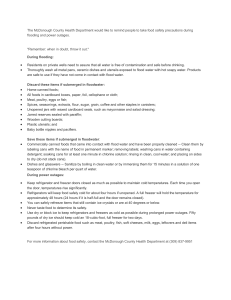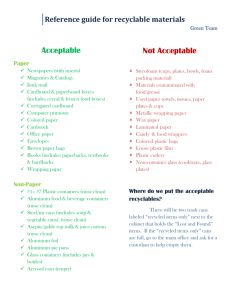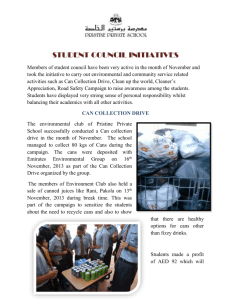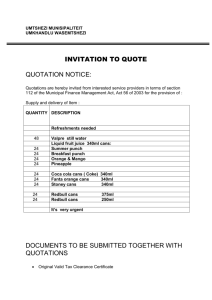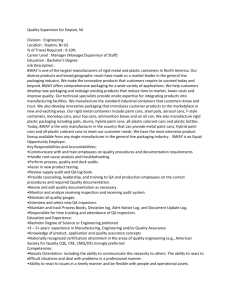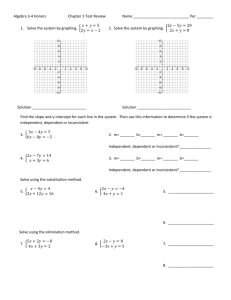COSEE Hands-On Activities USA Science & Engineering Festival
advertisement
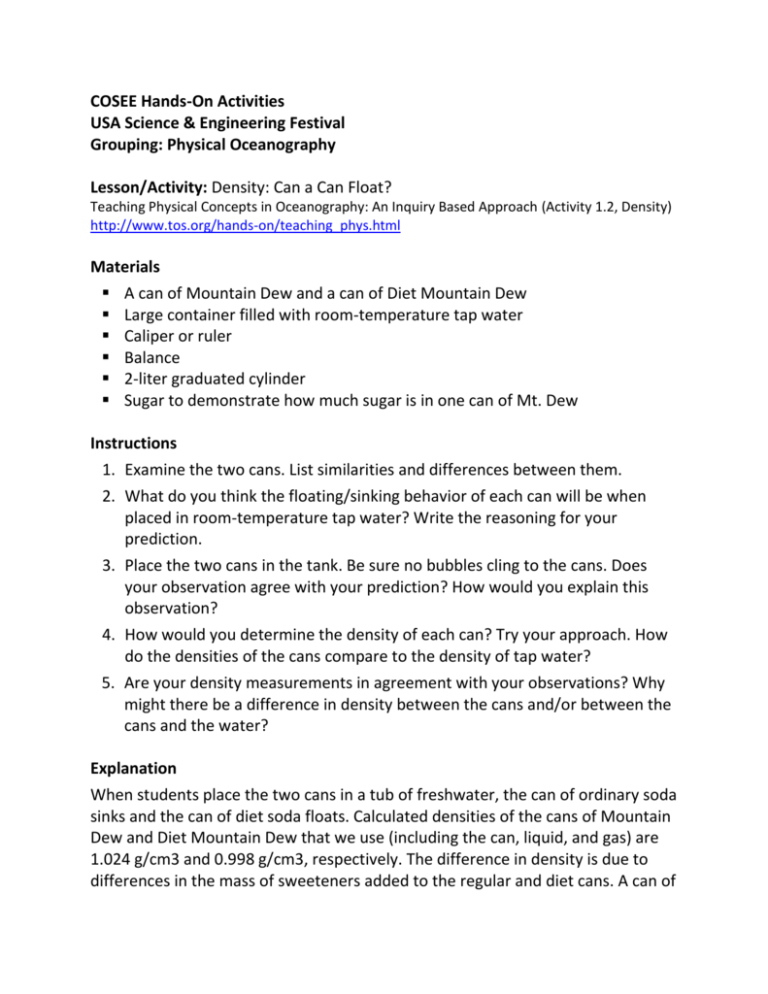
COSEE Hands-On Activities USA Science & Engineering Festival Grouping: Physical Oceanography Lesson/Activity: Density: Can a Can Float? Teaching Physical Concepts in Oceanography: An Inquiry Based Approach (Activity 1.2, Density) http://www.tos.org/hands-on/teaching_phys.html Materials A can of Mountain Dew and a can of Diet Mountain Dew Large container filled with room-temperature tap water Caliper or ruler Balance 2-liter graduated cylinder Sugar to demonstrate how much sugar is in one can of Mt. Dew Instructions 1. Examine the two cans. List similarities and differences between them. 2. What do you think the floating/sinking behavior of each can will be when placed in room-temperature tap water? Write the reasoning for your prediction. 3. Place the two cans in the tank. Be sure no bubbles cling to the cans. Does your observation agree with your prediction? How would you explain this observation? 4. How would you determine the density of each can? Try your approach. How do the densities of the cans compare to the density of tap water? 5. Are your density measurements in agreement with your observations? Why might there be a difference in density between the cans and/or between the cans and the water? Explanation When students place the two cans in a tub of freshwater, the can of ordinary soda sinks and the can of diet soda floats. Calculated densities of the cans of Mountain Dew and Diet Mountain Dew that we use (including the can, liquid, and gas) are 1.024 g/cm3 and 0.998 g/cm3, respectively. The difference in density is due to differences in the mass of sweeteners added to the regular and diet cans. A can of ordinary Mountain Dew contains 46 g of sugar! It will leave a big impression on your students if you weigh out 46 g of sugar to demonstrate the amount of added sugar (see right hand side of Figure 1.2). Variations of this activity are available on the internet. We caution that variability exists among different brands of soda and among cans within the same brand; in some cases, both diet and regular soda cans will float (or sink). Instructors should always test the cans before class. Alternatively, a case in which a can that is supposed to float does not can be turned into a teachable moment where students are challenged to test their understanding. This activity is an example of a discrepant event (see discussion on p. 24). Because the cans look and feel similar, students do not expect them to be different in terms of their sinking and floating behaviors. During the activity, students often raise the question of how to measure the volume of the cans (by volume displacement or by measuring dimensions of the can and calculating the volume of a cylinder). We let them choose an approach and since each group uses the same cans, we compare density estimates obtained by each. If time allows, we ask each group to use both approaches and compare their density estimations. One could further develop this activity to include estimates of the precision of each approach, as well as discussions on measurement accuracy and error propagation.
